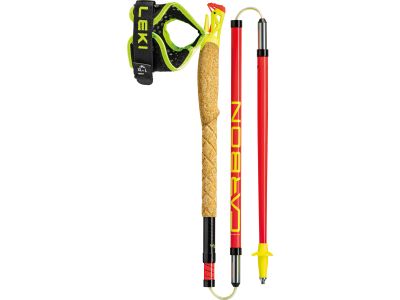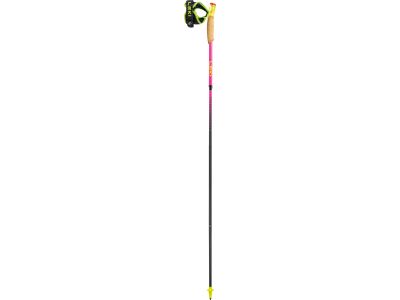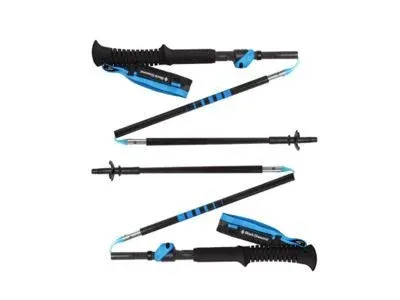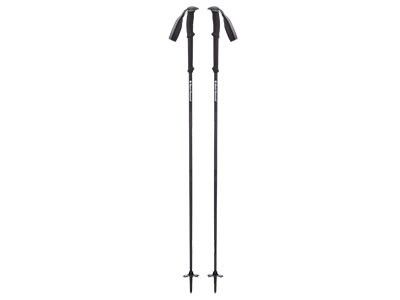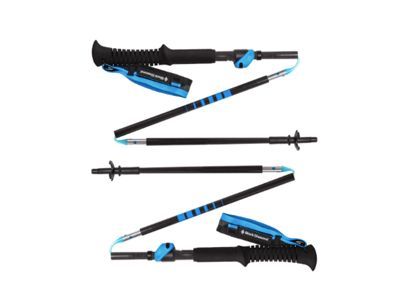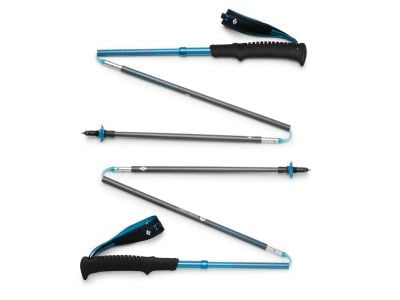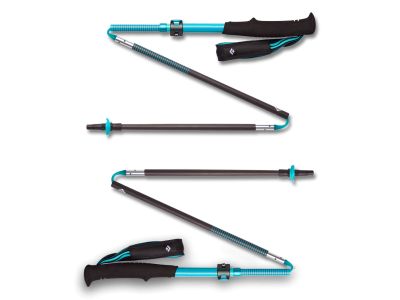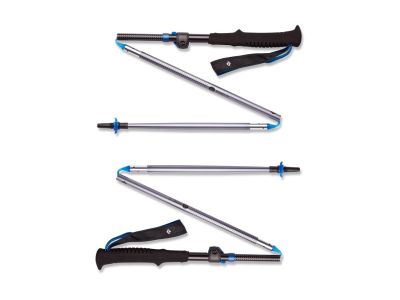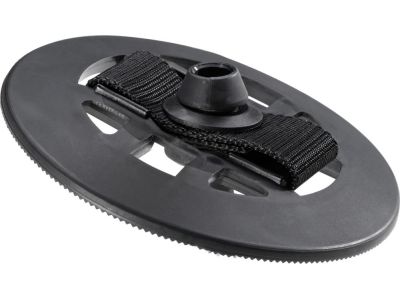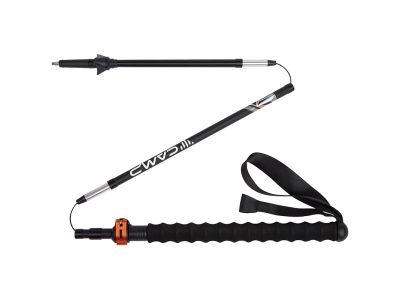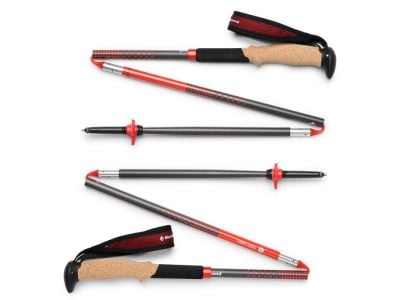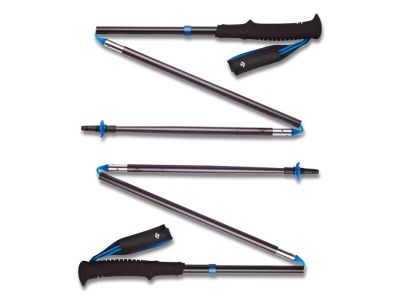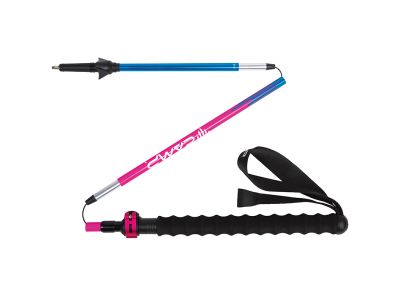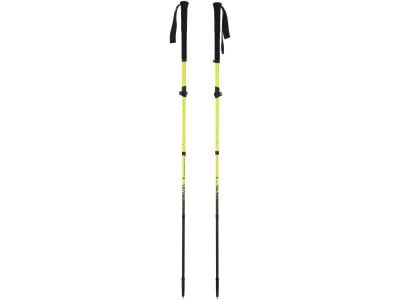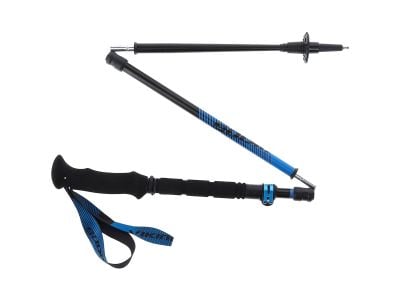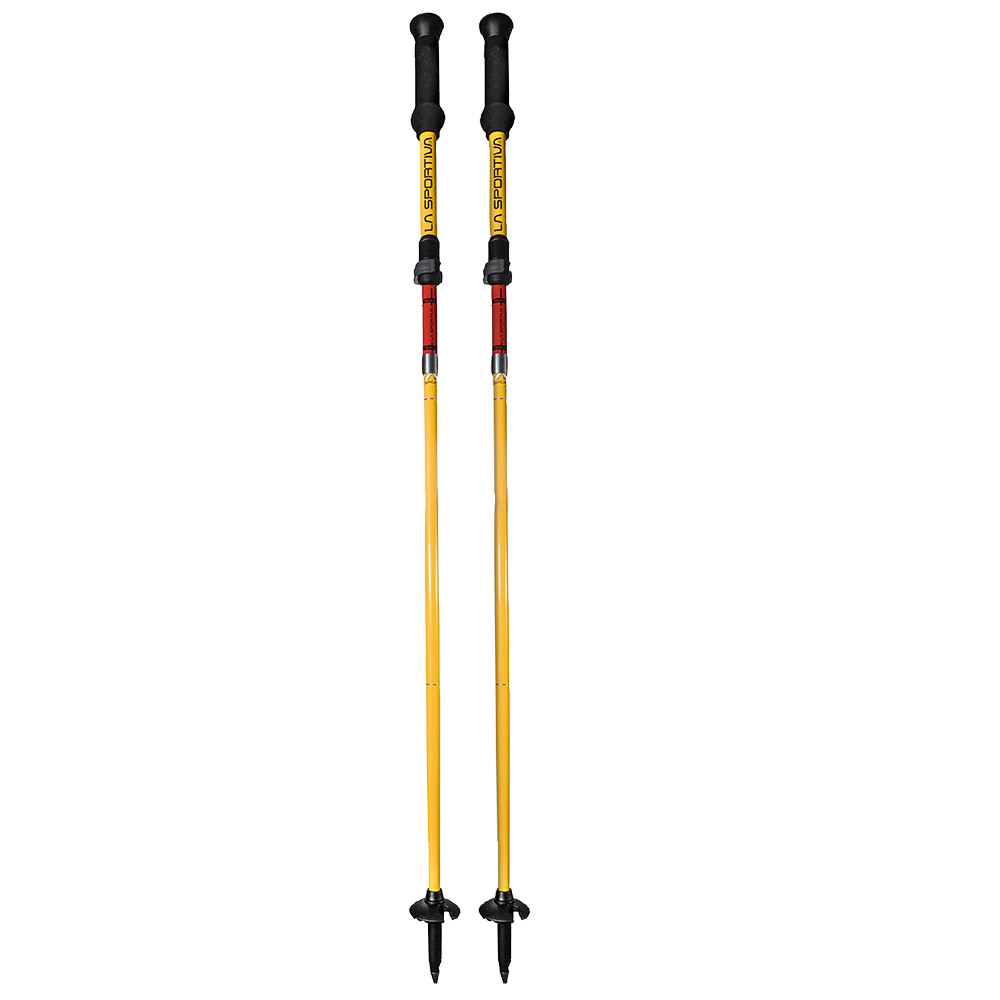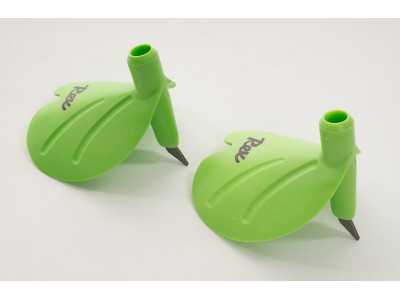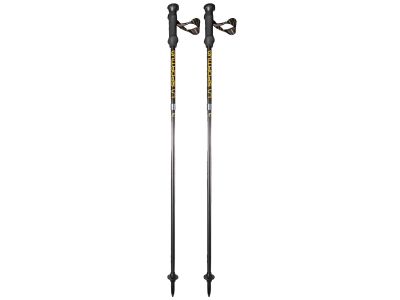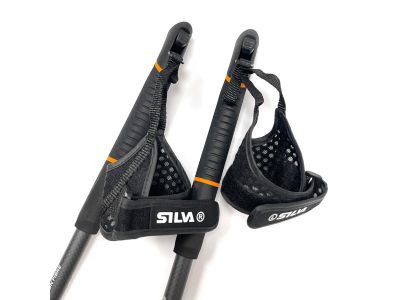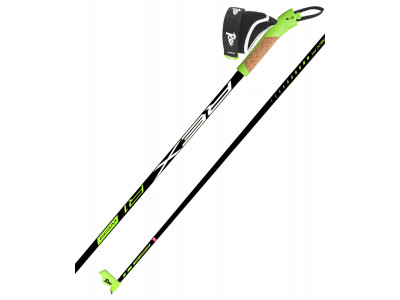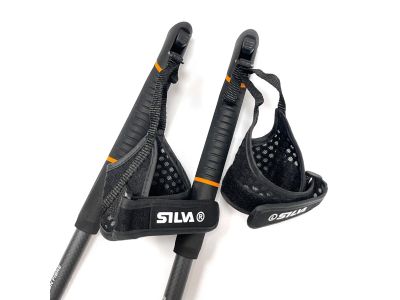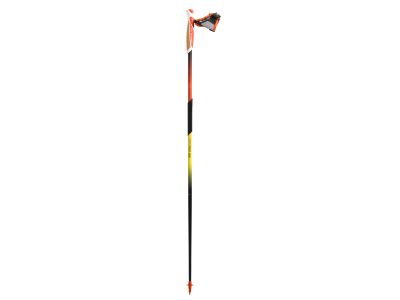Running poles, also known as trekking poles, are a popular accessory used by runners to improve balance, stability, and overall performance while running. These poles are usually made of lightweight materials such as aluminium or carbon fibre, which ensures durability and ease of use. It is important to learn how to use them correctly to make the most of your movement in difficult terrain. The poles need to be compact so that you can conveniently and easily attach them to your running backpack.
What types of running poles are there?
The most popular and widely used canes include the following types:
- Folding poles: These poles are designed to be highly portable and compact. They feature a folding design that allows them to be folded into a smaller size for easy storage and transport.
- Fixed poles: These poles have a fixed length and are not adjustable, as their name suggests. They are generally lighter and have a simpler design than folding poles, making them ideal for runners who prefer minimalism and simplicity.
How to choose the right running poles?
There are several factors to keep in mind when considering the specifications of running poles:
- Material: The material used in the construction of poles affects their weight, durability, and performance. Aluminium poles are sturdy and affordable, while carbon fibre poles are lightweight and offer excellent shock absorption.
- Grip: The grip of the pole should be comfortable and provide a secure hold. Common handle materials include rubber, foam, or cork. Some poles also offer extended handles or ergonomic designs for added comfort.
- Straps: Poles usually come with adjustable wrist straps that help secure the poles in your hands while allowing for a relaxed grip. Look for straps that are easy to adjust and provide good support without causing discomfort.
- Spikes and baskets: Pole spikes should be made of durable materials to withstand a variety of terrain. Removable rubber spikes are useful for increasing traction on hard surfaces, while carbide spikes are great for stability on icy surfaces. Baskets at the bottom of the poles help prevent sinking into soft terrain.
It's essential to choose running poles that suit your specific needs and preferences. Consider factors like weight, adjustability, and comfort to find the right poles that will enhance your running experience and provide the support you need on a variety of terrains.
What are the main benefits of using running poles?
Using running poles while running outdoors offers several benefits that can improve your overall performance and experience. Here are some key benefits of using running poles:
- Improves balance and stability: Running poles provide additional points of contact with the ground, which helps improve balance and stability, especially on uneven or challenging terrain. They distribute your weight more evenly, reducing the risk of slipping, falling, or spraining an ankle.
- Greater upper body engagement: When you use running poles, you engage your upper body muscles, including your arms, shoulders, and core, in addition to the lower body muscles used when running. This can help improve overall strength and endurance, leading to better overall performance.
- Less impact on joints: Running poles act as shock absorbers, reducing the impact on joints, especially the knees and ankles. This can be especially beneficial when running downhill or on hard surfaces, as the poles help to relieve some load on the lower body.
- Increased efficiency and speed: Running with poles can help your pace and increase your overall speed. Poles provide movement that can help maintain momentum and improve your running efficiency, especially on flat stretches or uphill.
- Hill running assistance: When climbing steep slopes, running poles can provide additional support and leverage, allowing you to push off the ground and maintain a more efficient and stable stance as you climb. This can help reduce fatigue and improve your ability to handle challenging uphill sections.
- Descent assistance: Running poles can be especially beneficial when descending steep slopes. They provide stability and balance, allowing you to control your speed and maintain control, reducing the risk of a fall or accident.
- Increased endurance: Running poles can help improve overall endurance by engaging your upper body muscles and reducing the strain on your lower body. This can allow you to go further and longer, whether you're trail running, hiking, or long-distance trekking.
- Versatility: Running poles aren't just limited to running. They can also be used while hiking, trekking, backpacking, or even snowshoeing, providing additional stability and support for a variety of outdoor activities.
It is important to note that using running poles requires proper technique and setup to maximize their benefits. It is recommended to practice and become familiar with the use of the poles before embarking on longer or more challenging runs or hikes.
